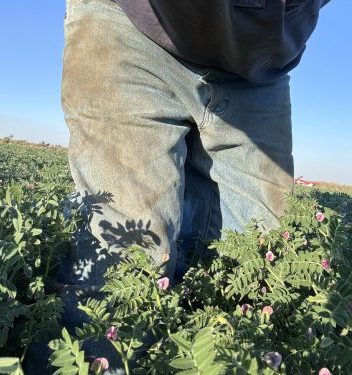Stellar Growing Conditions Boost Australian Chickpea Output to Near-Record Levels
The Australian Bureau of Agricultural and Resource Economics and Sciences (ABARES) has significantly revised its national chickpea and lentil production estimates for the 2024-25 season. This adjustment comes in response to exceptionally favorable growing conditions in Queensland and New South Wales.
ABARES has increased its chickpea production forecast by 200,000 tonnes, bringing the total estimated production to 1.3 million tonnes. This represents an 18 percent increase from the initial June estimate of 1.1 million tonnes and is 171 percent higher than the previous year’s crop. The revised estimate is also 70 percent above the 10-year average. The anticipated yield is expected to be the second-highest on record, reflecting both a significant expansion in planting area and favorable growing conditions.
In Queensland, the estimated area planted with chickpeas remains at 380,000 hectares, up 73 percent from the previous year, with production now forecasted at 640,000 tonnes, an increase from the initial estimate of 560,000 tonnes. Similarly, New South Wales has seen upward revisions in both area and production estimates. The area planted is now projected to be 350,000 hectares, up from 310,000 hectares, with production estimated at 650,000 tonnes, an increase from the June forecast of 540,000 tonnes.
The report also indicates a 6 percent increase in the lentil production forecast, raising the estimate to 1.7 million tonnes. This forecast reflects a more than doubling of the 10-year average and accounts for a significant expansion in the area planted. In South Australia, the lentil production estimate has been revised from 810,000 tonnes to 860,000 tonnes, with the area planted increased from 460,000 hectares to 470,000 hectares. Victoria’s lentil crop estimate has also been adjusted upwards, with production forecasted at 790,000 tonnes, up from 765,000 tonnes.
Despite these positive revisions, the report highlights ongoing challenges. Below-average winter rainfall in key cropping regions of South Australia and Victoria has led to moisture stress and reduced yield prospects. Continued dry conditions could impact yields further, particularly in the Mallee and Wimmera regions of Victoria.
ABARES emphasizes the need for timely and sufficient rainfall in the coming weeks to sustain above-average yields and mitigate potential risks associated with ongoing dry conditions.
Error




